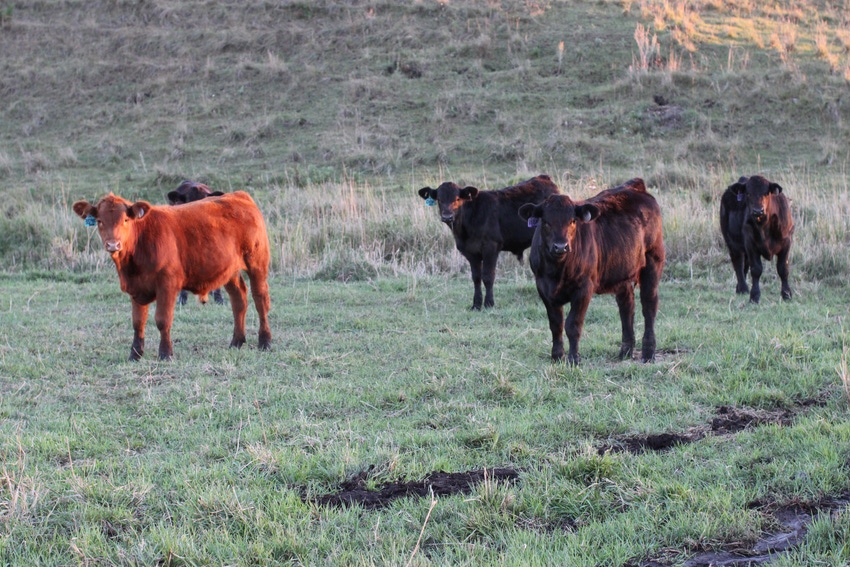How reducing risk factors for BRD attracts buyers
Want to top the sale for your weaned calves at the auction barn this fall? Do these things to instill confidence and provide assurance to bidders in the stands.
October 9, 2018

In the past couple of weeks, I’ve visited with some of the largest and most successful feedlot owners around the country. Interviews with these individuals have revealed their priorities, goals, concerns and challenges. From a cow-calf perspective, it was really eye-opening to learn more about how the management practices we follow on the ranch really have an impact on feeder cattle as they move to the feedlot up until the point of harvest.
It didn’t matter whether these folks operate in Texas, Idaho, Nebraska or somewhere in between, there were a few recurring themes I heard over and over again — the instances of bovine respiratory disease (BRD) from high risk cattle, the rates of morbidity and mortality in the feedlot and the subsequent costs and losses associated with these problems were all major challenges for these feeders.
Of course, calf management prior to feedlot arrival can greatly reduce the rates of illness and death in feeder cattle. Although a solid receiving protocol can eliminate some risk factors, it can’t always overcome repressed immune systems that could stem from stress in the cow during gestation, difficult calving, late to nurse or failure to receive colostrum, early illnesses (scours or pneumonia) during the spring months or high stress weaning scenarios.
READ: Is BRD a battle we'll never win?
While inclement weather sometimes determines how well we can control some of these issues, there are many things cow-calf producers can do to reduce these stress points during the time we own the calves. That can ultimately help them perform better and ultimately be more profitable for the stocker and feeder.
A focus on reducing stress, promoting health and wellness and mitigating risk through proper management not only benefits cattle buyers, but it builds the reputation of the cow-calf producer at the auction market as well.
If you’re counting on that one paycheck to get you through the year, it would be beneficial to provide detailed information about herd health, nutrition and management. In addition, working hard to reduce stress and illness during the first six months of the calf’s life is important. These are the things that can attract buyers and get the highest premium possible at the sale barn.
READ: Expert tips for pre- and post-weaning success
Yet, so many producers believe they don’t receive a premium for taking those extra steps. While that is debatable, I think the key takeaway is we all want to produce healthy, affordable and nourishing beef, and we all want to remain profitable to continue in this business for decades and generations to come. Taking shortcuts to save a buck doesn’t help you to achieve any of those goals, but that’s just my two cents.
So what can be done to lower the risk category of your feeder calves and provide some assurance for your buyers this fall?
In an article titled, “Recognizing and managing differences in health risk of incoming feeder cattle,” Erin Laborie, University of Nebraska-Lincoln (UNL) Extension educator, lists the factors that can qualify your calves to be considered low risk.
Laborie writes, “Calves that undergo a preconditioning period and yearling cattle from a single source with a known health record are often considered low risk. High-risk cattle are generally calves that have been recently weaned with no history of vaccinations, transported for an extended period of time, commingled with other lots at the sale barn, or simply lack information about their past.”
She referenced a study conducted at Oklahoma State University that evaluated the effects of weaning strategies and commingling calves from various sources on health and performance during a 42-day receiving period.
Of the study, Laborie said, “Calves bought through auction markets and then commingled were more likely to be treated for BRD than calves from a single-source ranch. In regard to weaning strategy, calves shipped at weaning were more likely to require treatment than calves preconditioned on the ranch for 45 days prior to shipping. Consequently, the increase in morbidity led to elevated health expenses.”
READ: Battle BRD with genomics
Roger Ellis, former South Dakota State University Extension beef feedlot field specialist, explains how BRD can greatly impact production.
Ellis writes, “Morbidity and mortality in newly weaned/received feeder cattle from BRD continues to be the most significant health problem facing the feeding industry. BRD accounts for well over 50% of all cattle treated for sickness with reported average incidence rates in groups of calves at 14%.
“Several studies have documented the economic impacts of disease on the profit outcomes of calves. Direct costs attributable to BRD include death losses, treatment and labor costs, and prevention costs. BRD has been shown to impact growth performance and feed efficiency, days on feed, carcass merit and market value. The bottom line of all studies indicates that BRD can decrease the returns of individual cattle from $50 to $250.”
Ellis says the top five predictive factors for BRD morbidity and mortality include cattle health risk, weather patterns, labor quality and availability, receiving period nutrition and prevention programs utilized, such as vaccination, metaphylaxis and treatment protocols.
He explains, “In addressing the number one predictive factor (the cattle themselves), it is recognized that the type, origin, age, source, and management background of the calves are factors that influence the health of the cattle.
“Additionally, the genetic, environmental, nutritional, and immune status also contributes to the risk of disease. Furthermore, the management stressors that are imposed upon calves will compound all these other factors.”
For details on the predictive factors of calf BRD risk and their long-term effect on feedlot health, performance and carcass quality, click here.
The opinions of Amanda Radke are not necessarily those of beefmagazine.com or Farm Progress.
About the Author(s)
You May Also Like





